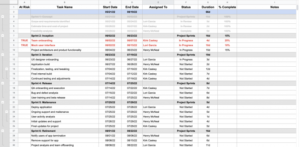A new study by Experian explores how businesses need to adapt as the economy reopens

Image: Chaay_Tee, Getty Images/iStockphoto
Although Americans have adjusted to the new normal of remote work and the easing of lockdown restrictions, many remain unhappy. Less than one-third of Americans (30%) are satisfied with their current situation, according to a recently released survey global information services company Experian conducted over a 15-week period.
SEE: COVID-19 workplace policy (TechRepublic Premium)
As a result, businesses need to understand the shifts in consumer sentiment since the coronavirus pandemic began and communicate with them differently going forward.
The study found that:
- Groceries, food delivery and takeout, and entertainment are the only areas where spending increased; 32% of consumers cut back on overall retail spending
- Half of Americans (47%) are buying more online than previously, citing the ability to save time, free delivery, and more time to browse online as the main reasons
- Healthcare remains a major concern as 63% of those surveyed are concerned about visiting the doctor
- Consumers are hopeful; 33% feel overall conditions are improving, which is up from 13% 15 weeks ago
Surprise findings
“Perhaps the most unexpected finding was 46% of respondents are still concerned about accessing food and essentials,” said Jill Canetta, Experian’s chief data officer of marketing services. “It was a trend we saw during the early weeks of the pandemic—when food and water was scarce—but with grocery store shelves stocked and stores reopening in certain parts of the country, we anticipated seeing a smaller percentage.”
The higher percentage may be attributed to the uptick in COVID-19 cases over the past few weeks, as well as the financial hardship some Americans have experienced and the subsequent impact it’s had on their ability to access resources, Canetta added.
“Interestingly, with the uptick in positive COVID-19 cases over the past few weeks, only 19% of respondents believe the situation is going to get worse,” she noted. “With the increase in infection and death rates across many states, we’d expect that number to be much higher.”
With counties and states reopening and shutting down again, the situation for many Americans will remain fluid for the months ahead, Canetta said. “Consumer behavior and sentiment are going to continue to shift. Businesses need to understand how consumers are feeling and communicate with them accordingly.”
They also need to keep in mind that a one-size-fits-all communication strategy doesn’t work. Everyone will be affected differently based on their unique situation, Canetta said.
Further, since different areas of the country are at different stages of the pandemic lifecycle and various age demographics feel differently about the situation, businesses will need to adjust their messaging, she said.
“For instance, 26% of respondents in urban areas are spending less, while 36% of respondents in rural areas have cut back on spending,” she said. “Businesses need to understand consumer sentiment at a more granular level to ensure they’re delivering messages that resonate with their intended audience.”
Consumer sentiment has rebounded
The most significant shift since the start of the pandemic has been an overall improvement in consumer sentiment, according to Canetta. “In fact, it trended positive in late June—though it has dipped slightly over the past few weeks, likely due to the increased infection rate. And we’ve seen some noticeable shifts across industries.”
For example, the percentage of respondents concerned about visiting the doctor’s office has increased since the middle of June to 62% from 53%, she said.
Broken down by generation, the majority of Generation X and millennial respondents are concerned about visiting the doctor’s office, however, fewer than 45% of them are evaluating telehealth options—which could be attributed to the lack of awareness, Canetta said.
From a retail perspective, 55% of respondents are shopping more online than prior to the pandemic, “and the trend has shifted from necessity to convenience,” she said. “If we take these examples into account, healthcare organizations may consider reinforcing telehealth education materials, while retailers may want to communicate contactless pick-up and delivery options.”
SEE: Return to work: What the new normal will look like post-pandemic (free PDF) (TechRepublic)
Canetta reiterated how important it is for businesses to gauge consumer sentiment on a regular basis to make sure they’re addressing their customers’ most pressing needs.
Not surprisingly, the study found that media consumption soared in the first few weeks of stay-at-home orders. Most respondents turned to streaming services and video games, “but we’ve seen the percentages drop to more normal levels—particularly as people struggle to find content they haven’t seen and lockdown orders ease,” Canetta said.
In terms of what may be ahead, she said the uncertainty of COVID-19’s trajectory makes it hard to predict.
“When it seemed as though the country was making progress against COVID-19, we saw sentiment improve, though it has dipped slightly over the past few weeks in line with increased infection rates,” Canetta said. If the spike in cases continues, consumer sentiment may continue to fall.
“But with the expected shifts in consumer sentiment, it’s going to be critical for businesses to understand these changes so they can best communicate with consumers—particularly as COVID-19 plays out,” she said. “The more insight businesses can garner, the better positioned they will be to reach the right consumers, at the right time, with the right message/tone to help them address their most pressing needs.”
Also see
Source of Article




